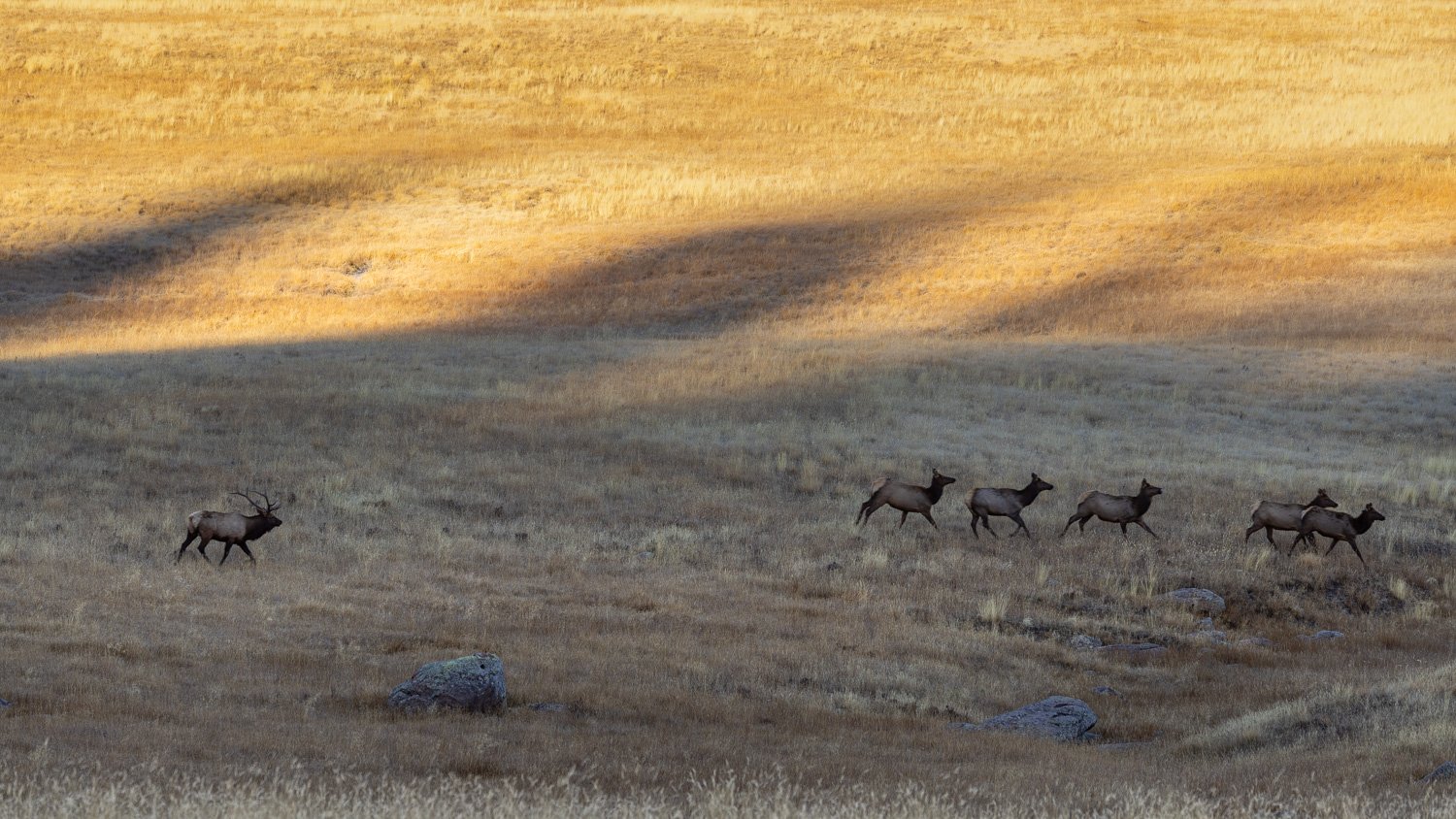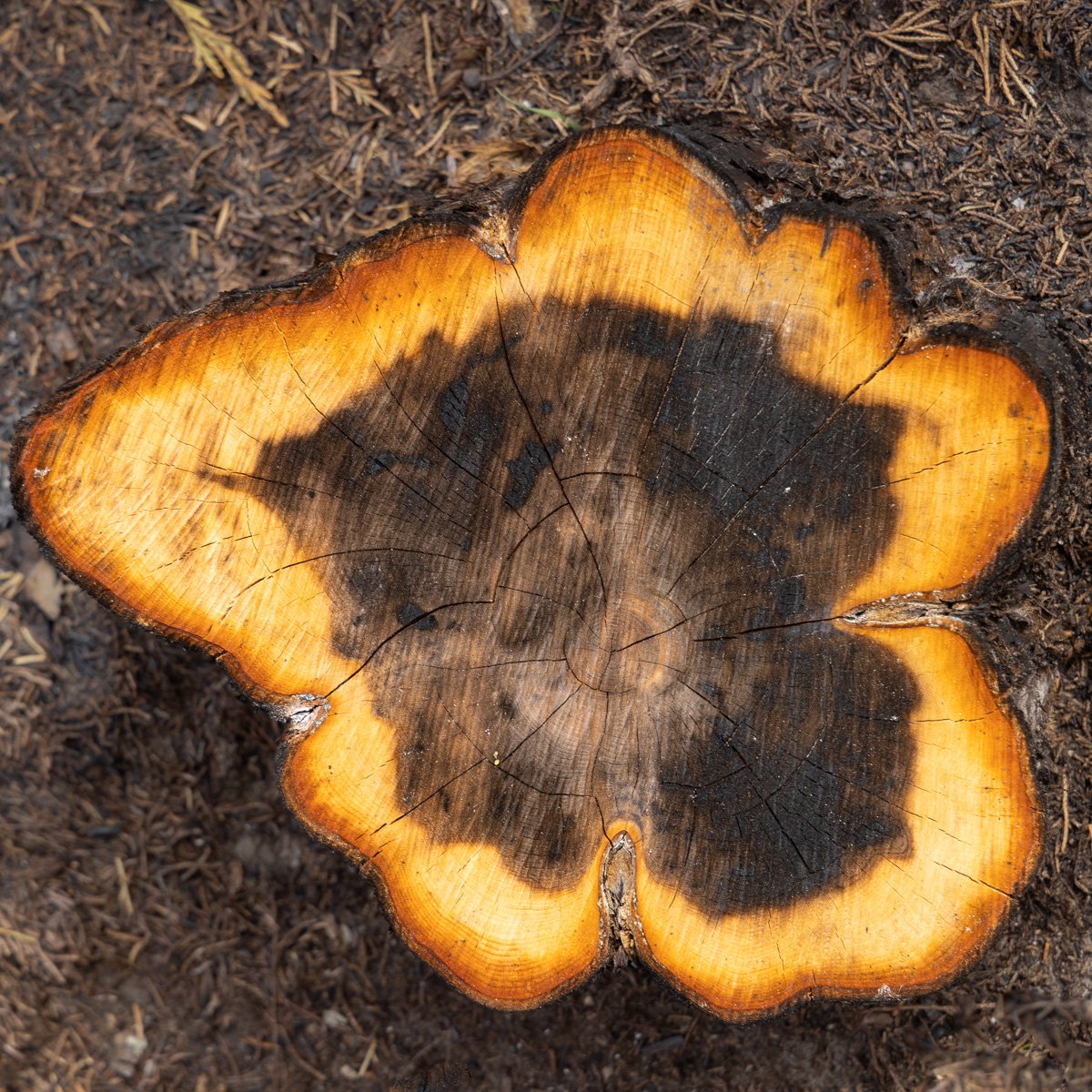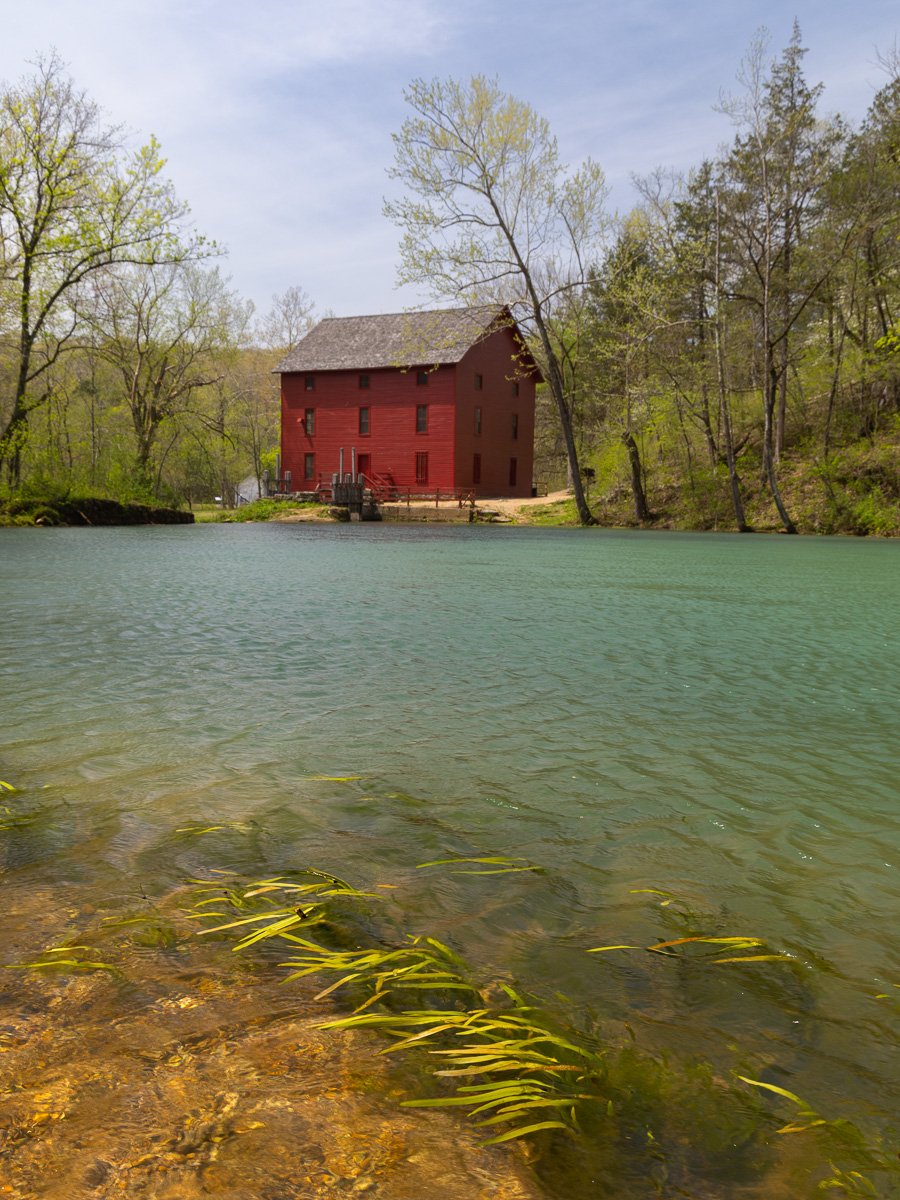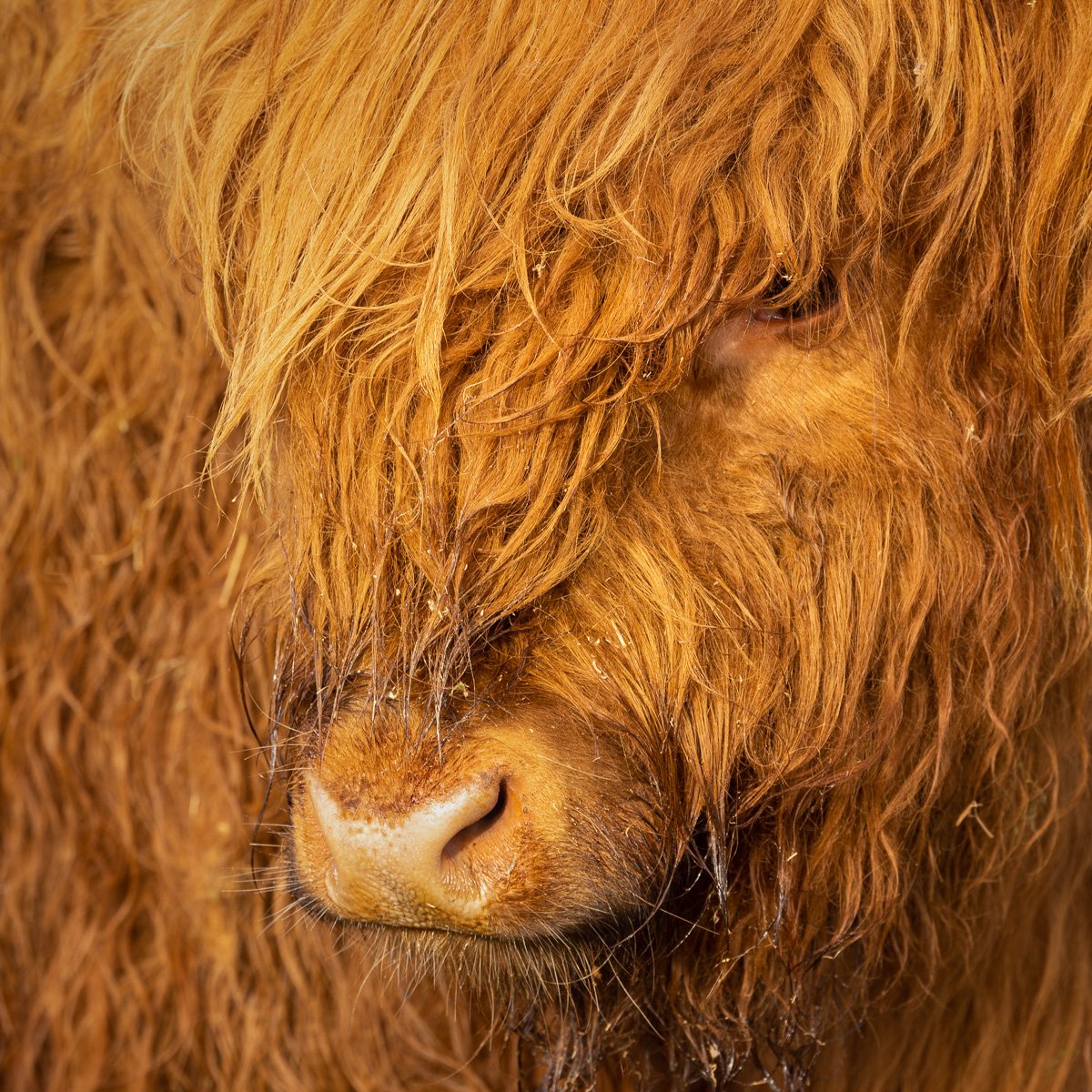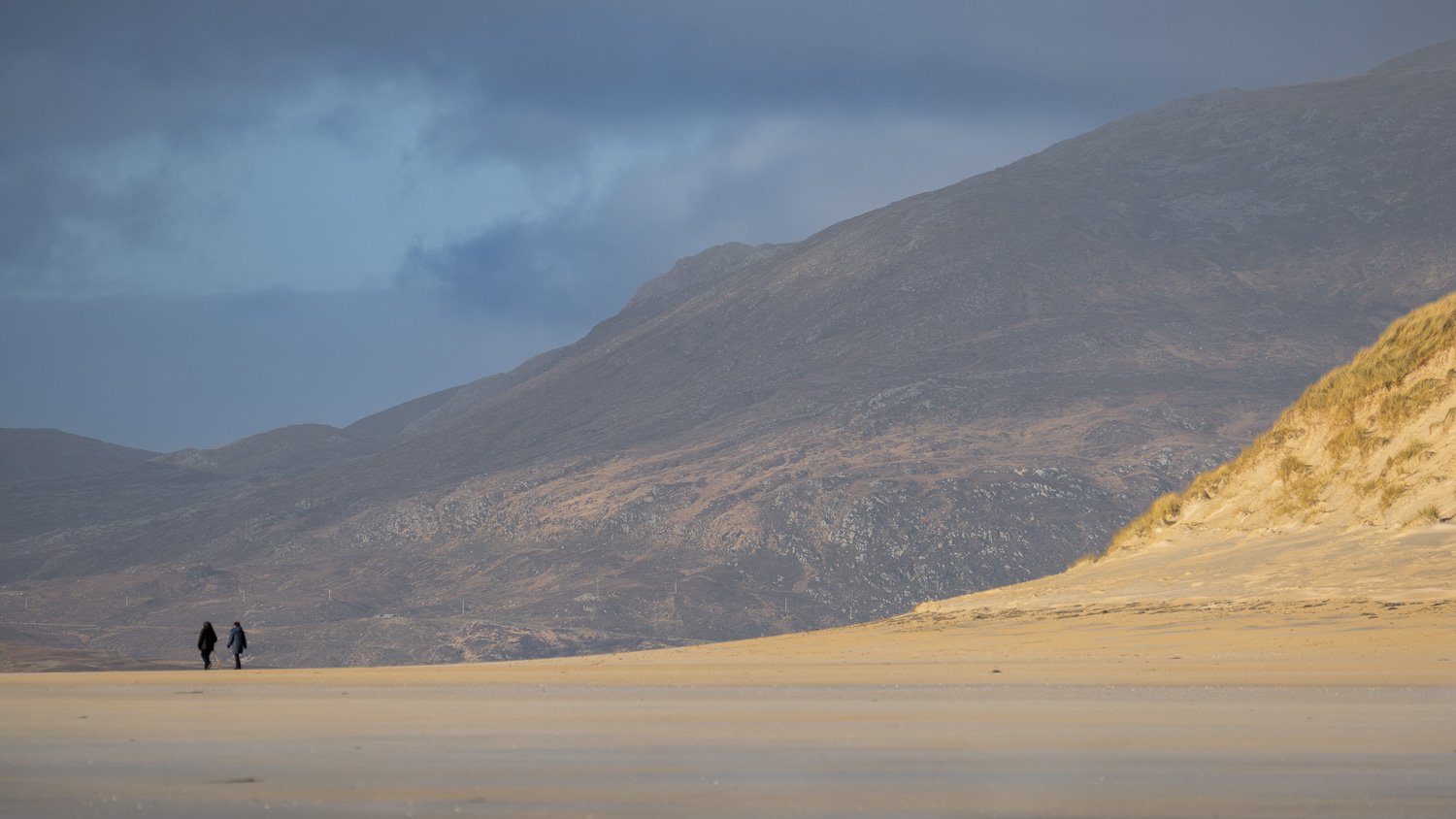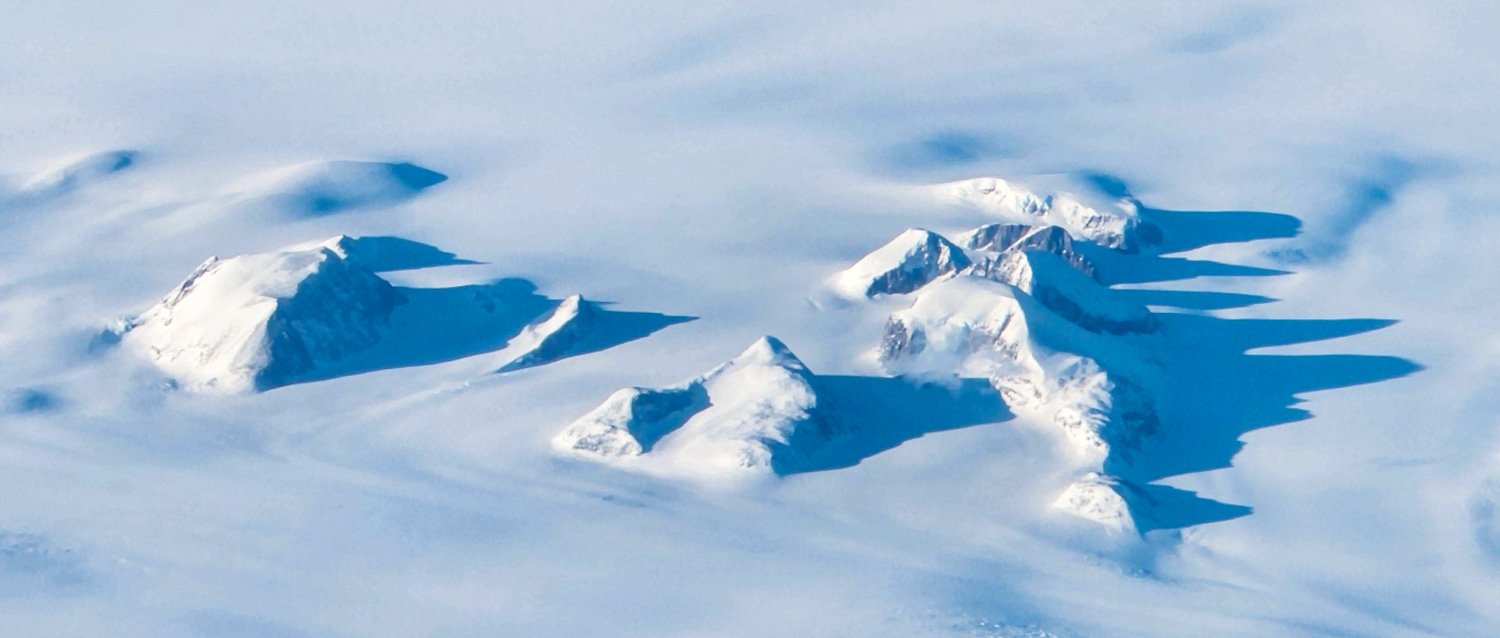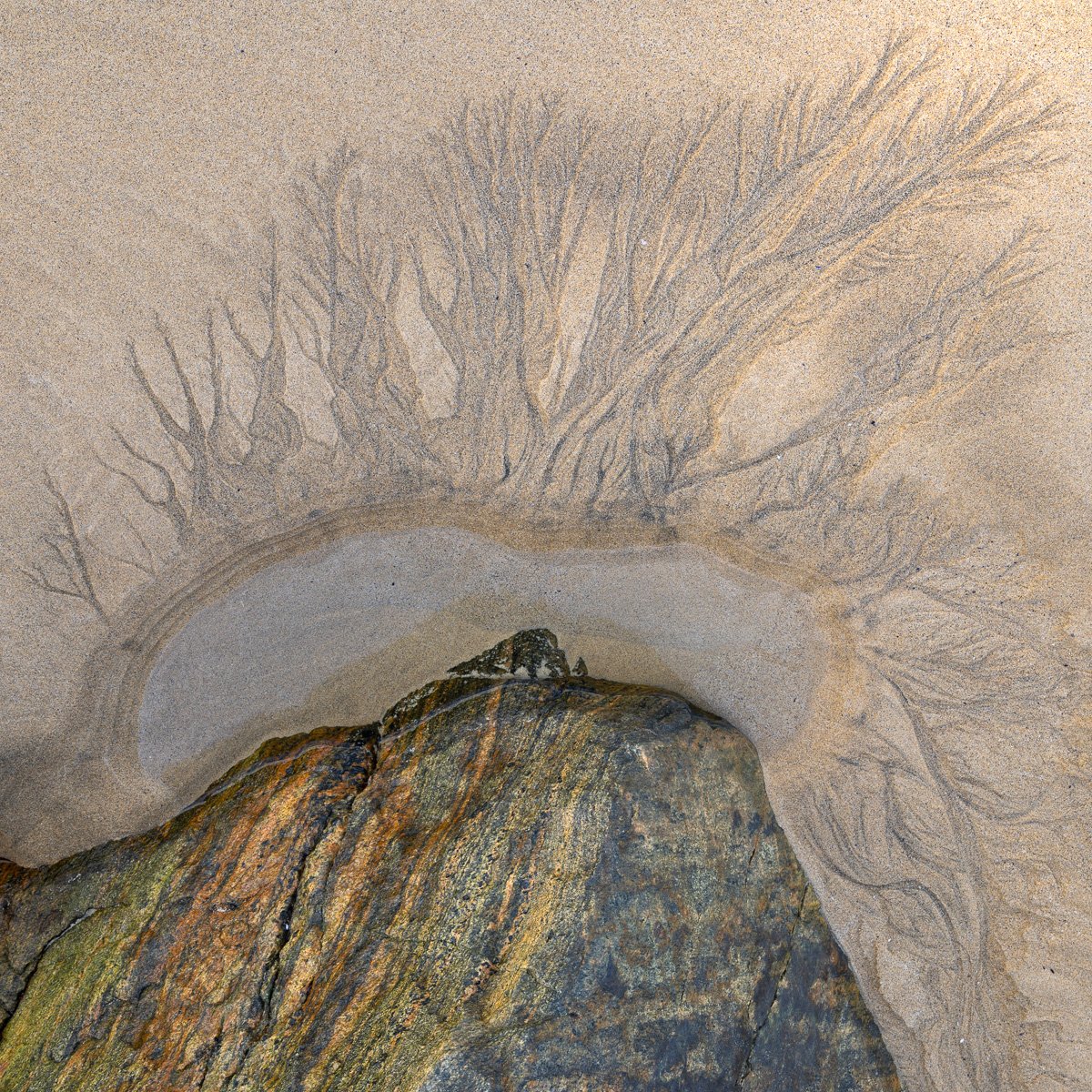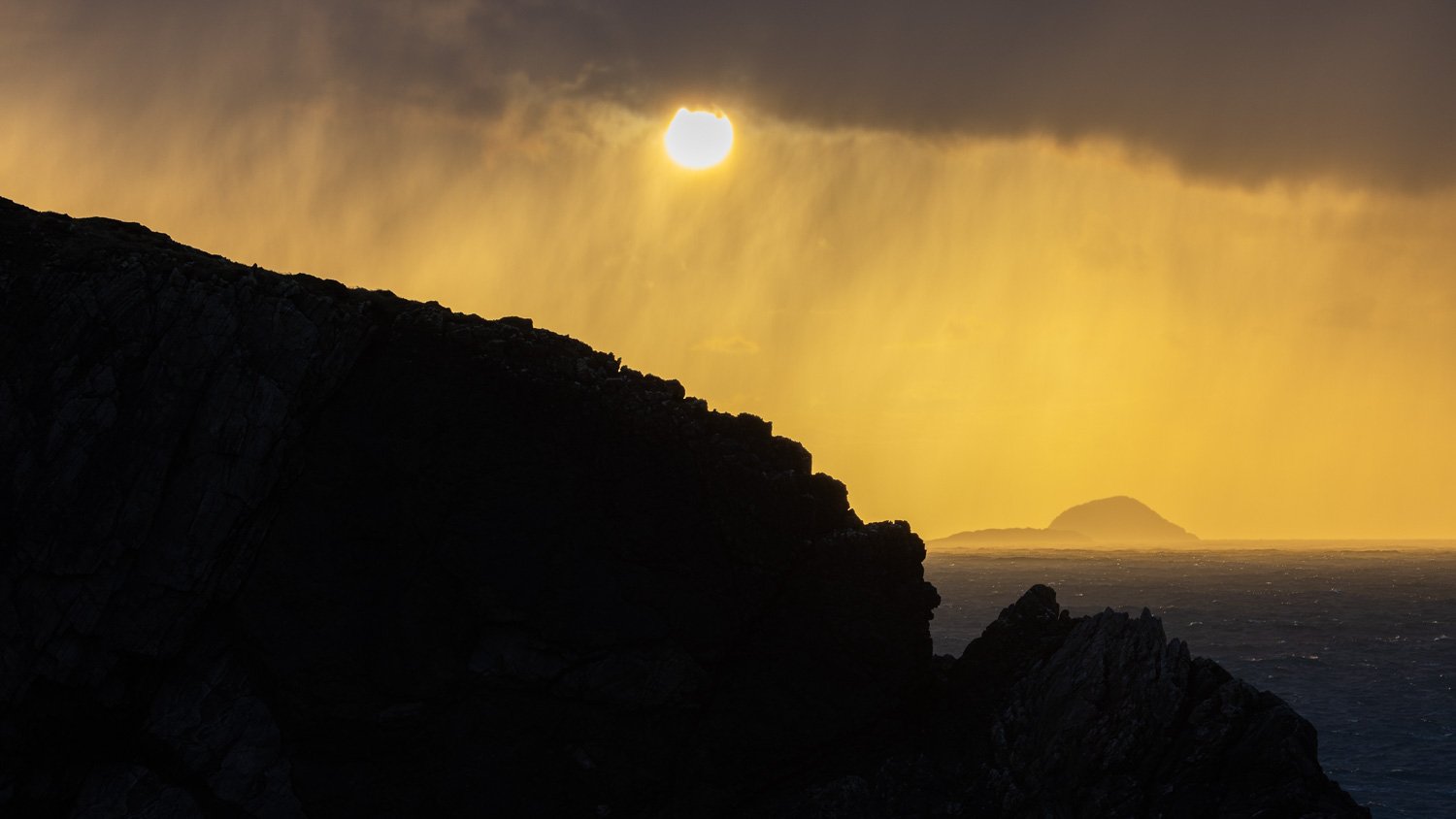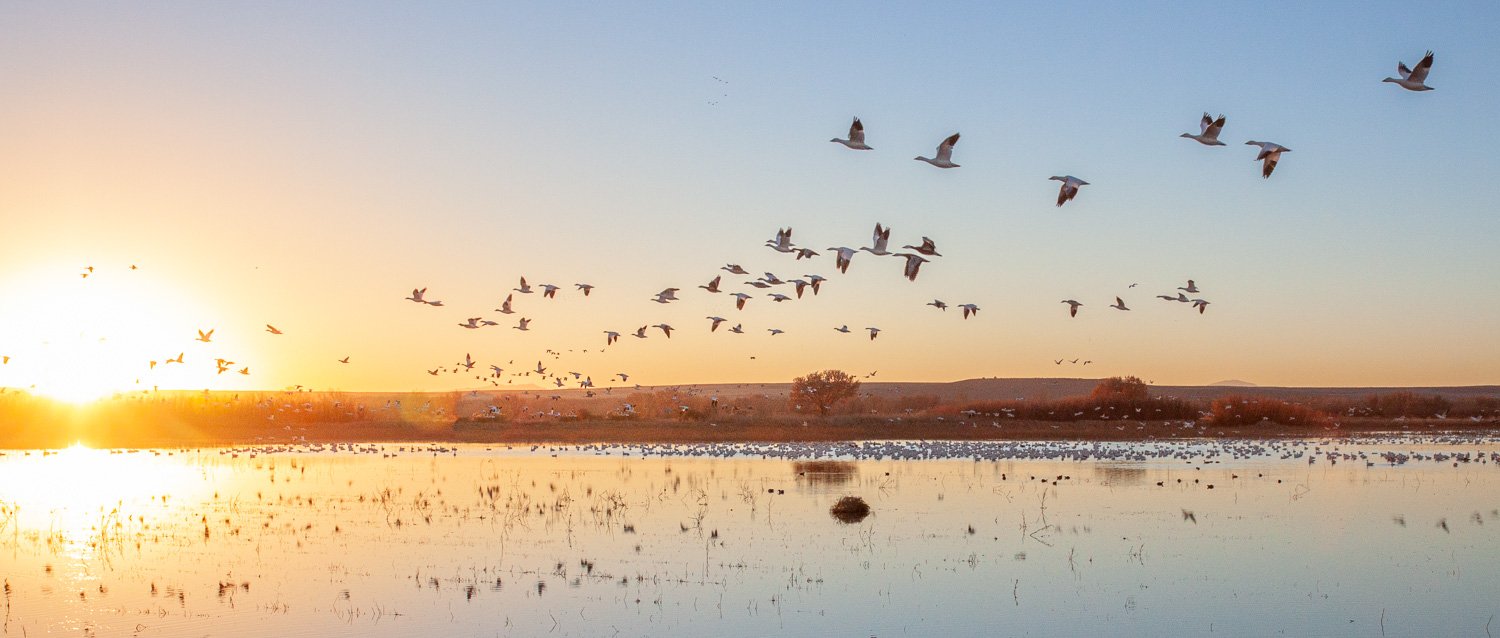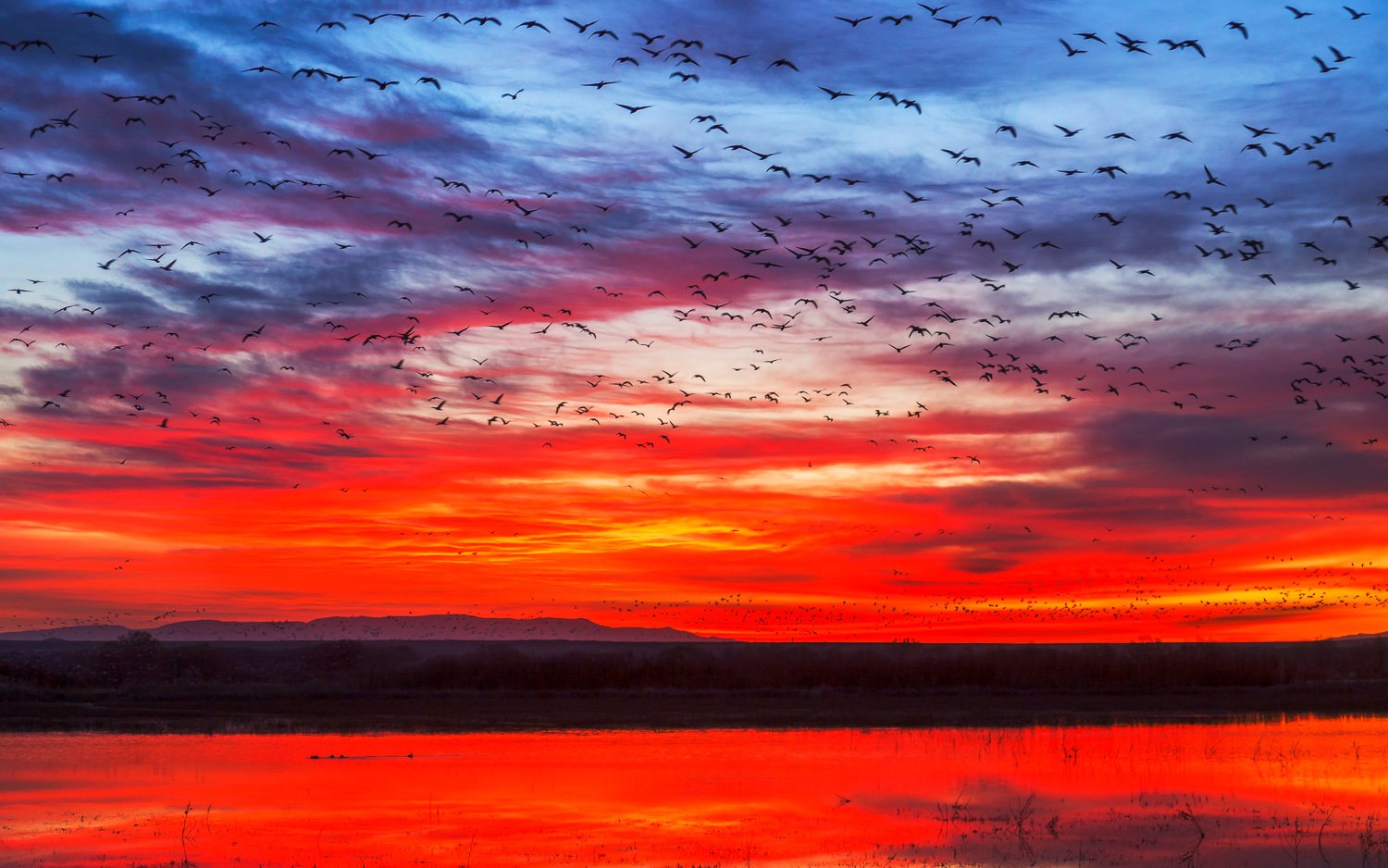At dawn, Chance and I headed down one of the few pet friendly trails at Valles Caldera National Preserve in northern New Mexico. I’m unable to experience the world of smell that surrounds a dog, but this trail was soon a favorite of Chances with his nose to the ground pulling me down the side of the ancient volcano caldera. He’d stop with snout in the air to investigate more, and we would both hear elk bugling in the distance. The fall air was cool at over 9,000 feet as we descended from the road on the caldera edge down to the largest of the park’s valleys in the caldera—Valles Grande.
When we got through the aspen and fir and began to see the yellow grasses of the valley floor, the bugling got louder, and we saw dozens of elk cows and calves crossing in front. Finally, a big bull was at the end of the line.
Elk at Valles Caldera National Preserve
As we waited for the herd to go by, we enjoyed the dawn bird chorus. Autumn colors in the bushes, vines and trees contrast against the charred trunks of past fires. I had hoped to visit Valles Caldera in April 2022, but what would be one of the largest and fastest fires in New Mexico history had closed the park. Then, I could only see the huge smoke cloud: Houses on Fire.
The massive volcano last erupted only about 69,000 years ago, then collapsed leaving a nearly 14 mile wide caldera. As the sun rose, more of the valley got illuminated.
As we got ready to head back up the trail, Chance posed. Then we heard some coyotes to the left of us. Soon their howling was joined by an even larger group to the right. It seemed the valley just echoed with coyote call. Time to head up trail.
The walk back was quiet. The elk and coyote stopped their calls, and even the birds had finished their morning chorus. A few tree squirrels yelled at us while some ground squirrels ran by.
Even the breeze did not stir the aspen leaves. As we were finishing the hike, there were sudden loud cracks. Just ahead, a lone bull elk had spotted us, and he ran twisting his head, mostly avoiding the branches with his antlers but a few cracked loudly behind him.
